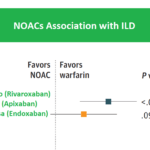Insulin is one of the essential hormones in our body. Low levels of insulin are the hallmark of Type 1 Diabetes Mellitus. In Type 2 Diabetes Mellitus, insulin levels are usually normal or slightly higher than normal in the early stages.
Insulin levels in Type 2 Diabetes tend to fall to normal or less than normal with time as more and more beta cells of the pancreas are lost.
When insulin levels fall in individuals with Type 2 Diabetes Mellitus, they are prone to develop Diabetic Ketoacidosis similar to patients who have Type 1 Diabetes Mellitus.
Insulin levels are inappropriately high in patients with insulinoma and those who take drugs that stimulate insulin release such as Sulfonylureas and Repaglinide.
| You may also like to read: |
Reference ranges of insulin levels:
Insulin levels vary in normal individuals, those with Type 1 Diabetes Mellitus, and those with Type 2 Diabetes Mellitus.
Insulin levels spike after glucose administration and after a meal. The table below shows the reference ranges of insulin in normal individuals after the administration of glucose:
Insulin Levels | Insulin Level (SI Units*) | |
| Fasting | Less than 25 mIU/L | Less than 174 pmol/L |
| 30 minutes after glucose administration | 30 to 230 mIU/L | 208 to 1597 pmol/L |
| 1 hour after glucose administration | 18 to 276 mIU/L | 125 to 1917 pmol/L |
| 2 hours after glucose administration | 16 to 166 mIU/L | 111 to 1153 pmol/L |
| More than 3 hours after the administration of glucose | Less than 25 mIU/L | Less than 174 pmol/L |
| SI unit: 6.945 times conversational units | ||
In Type 1 Diabetes Mellitus, Insulin levels and C-peptide levels are low indicating reduced body production. Thus, all individuals with Type 1 Diabetes require exogenous insulin to survive.
In Type 2 Diabetes Mellitus, insulin levels and C-peptide levels are higher than normal in the early stages of diabetes. Higher Insulin and C-peptide levels indicate that the body is producing enough insulin but is not adequately responding.
This is called Insulin resistance. Insulin sensitizers work best at this stage. Other measures that reduce insulin resistance are exercise, a low-calorie diet, and weight loss.
Time-tested insulin sensitizers are metformin, pioglitazone, and now the novel medicines of the GLP-1 class, Ozempic, and Rybelsus.
With time, more and more Beta cells are lost and type 2 diabetes patients may require insulin. They may even develop DKA (diabetic ketoacidosis) at times of stress.
| You may also like to read: |
Disorders Linked with High Insulin Levels
The following conditions are linked to enhanced insulin resistance (beta cells compensate by producing excessive amounts of insulin):
- Acromegaly
- Cushing syndrome
- Obesity
- Steroid administration
- Type 2 diabetes (initial stage)
- Insulin receptor mutation
According to research, the onset of insulin resistance in skeletal muscle and adipose tissue is correlated with mitochondrial reactive oxygen species. [ref]
An investigation found that the structure and function of the brain may be adversely affected by insulin resistance in obese female teenagers. [ref]
The following conditions are linked to higher insulin secretion:
- Insulinoma (insulin or proinsulin secreting tumors) (insulin or proinsulin secreting tumors)
- Administration of Insulin secretagogues.
Elevated insulin levels are related to excessive insulin administration.
The following conditions are linked to reduced insulin excretion:
- A severe liver condition
- Critical heart failure (liver congestion)
Elevated insulin levels are related to autoimmune responses to insulin or the insulin receptor.
| You may also like to read: |
Disorders linked with low insulin levels
Some of the conditions linked to beta-cell degeneration are given below:
- following a pancreatectomy
- recurring pancreatitis
- immune system damage
- diabetes type 1
Due to genetic defects and insulin resistance, beta cells in type 2 diabetes (late stage) are unable to release enough insulin to keep blood glucose levels stable.
| You may also like to read: |
Exogenous Insulin administration:
It takes around 40–50% of the whole daily dose of insulin to replenish the insulin lost overnight, during fasting, and in between meals.
That is why 50% of insulin replacement is long-acting or basal insulin. Typically, the daily dosage of basal or background insulin remains constant.
The remaining 50–60% of the total daily insulin dosage is used to cover carbohydrates in food and to lower blood sugar levels. This is called “bolus insulin replacement” or “preprandial insulin replacement.
The ratio of insulin to carbohydrates is used to determine the bolus dosage for meal coverage. The insulin-to-carbohydrate ratio is a measurement of how many grams of carbohydrates are consumed or covered by 1 unit of insulin.
One unit of rapid-acting insulin is required for 12-15 grams of carbohydrates. According to a person’s sensitivity to insulin, this range might range from 6 to 30 grams of carbohydrates or more.
Stress and physical exercise can impact insulin sensitivity, which might result in different insulin levels in type-2 diabetes. It also varies from person to person and from time to time as well.
| You may also like to read: |
In conclusion:
Insulin levels in the blood can vary according to the blood glucose in your body. Insulin and C-peptide levels are diagnostic in patients who have insulinoma. However, they are rarely done in patients with Type 2 Diabetes.
Insulin levels can not differentiate clearly between type 1 and type 2 diabetes. Type 2 Diabetes patients usually have higher than normal levels compared to insulin levels in Type 1 Diabetes.
Higher insulin levels in type 2 diabetes patients is an indicator of underlying insulin resistance. These patients are best treated with insulin sensitizers such as metformin.
Low insulin levels in type 2 diabetes patients may identify patients who best respond to insulin and insulin secretagogues.
| You may also like to read: |



